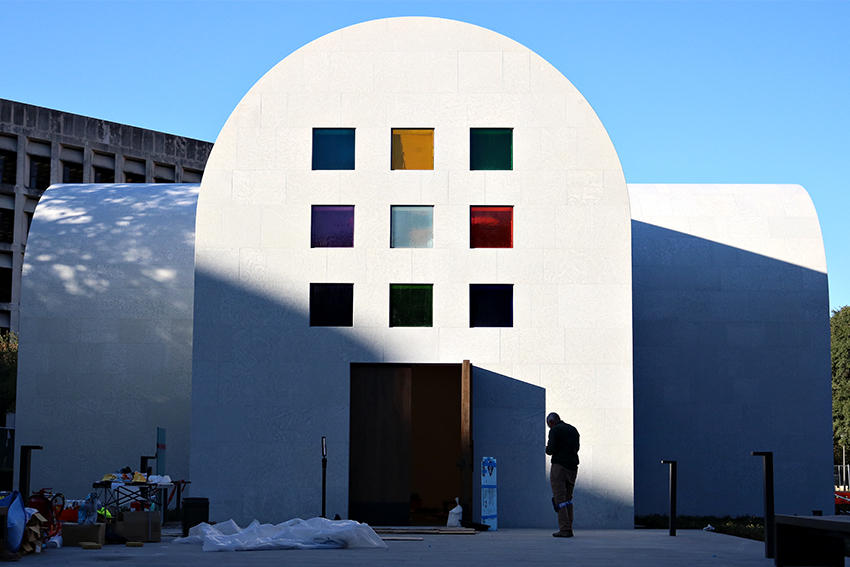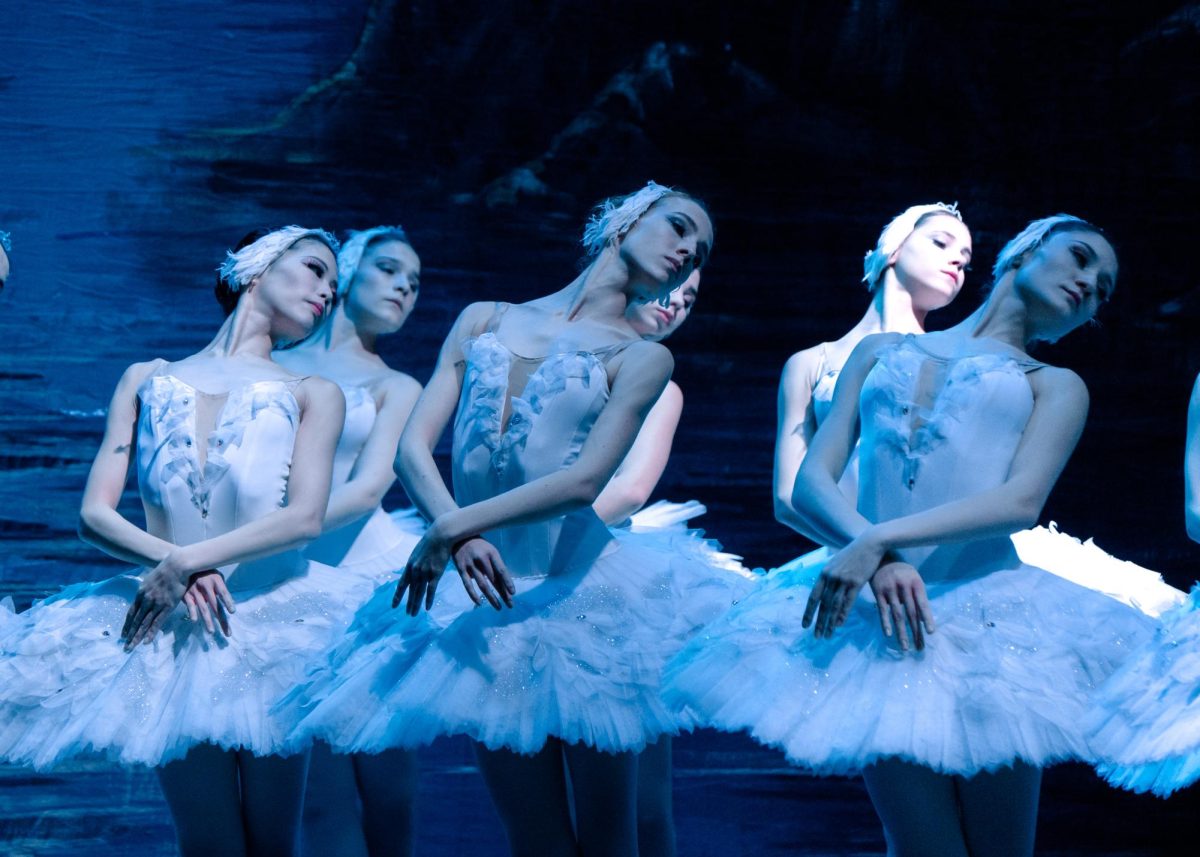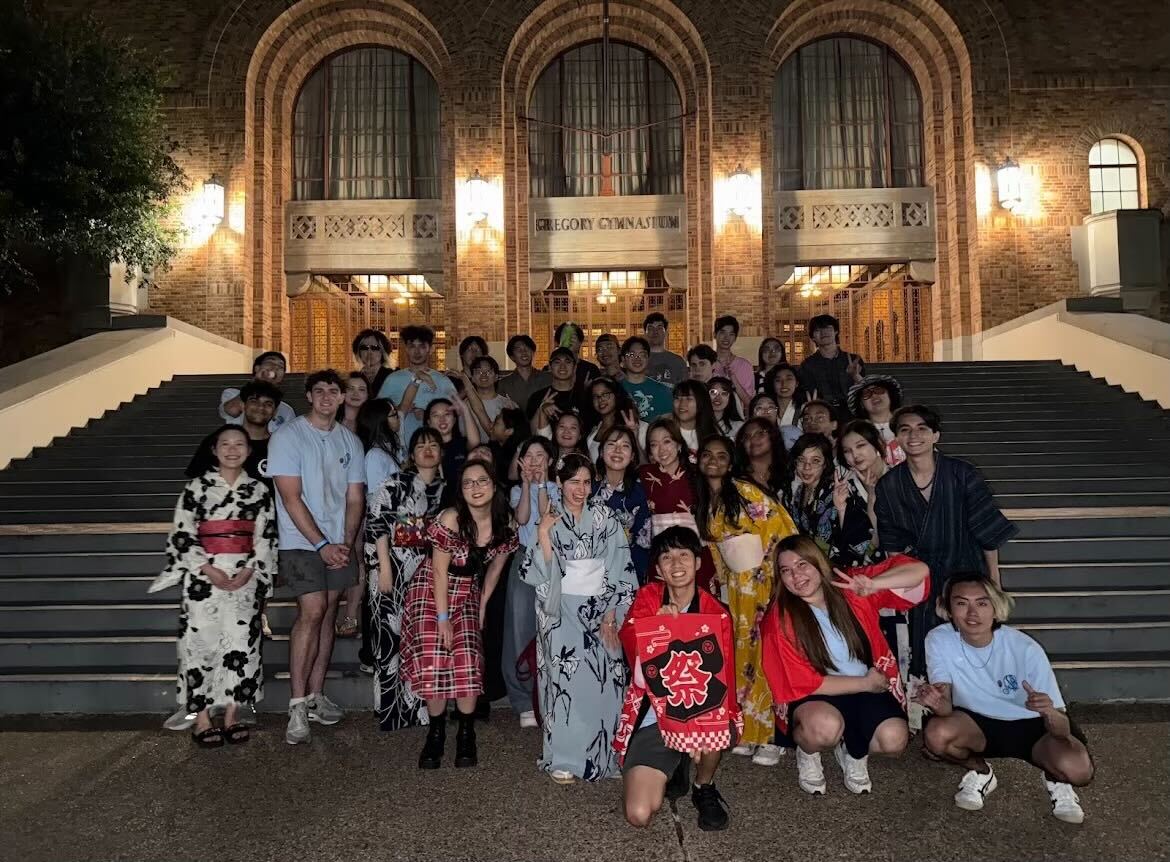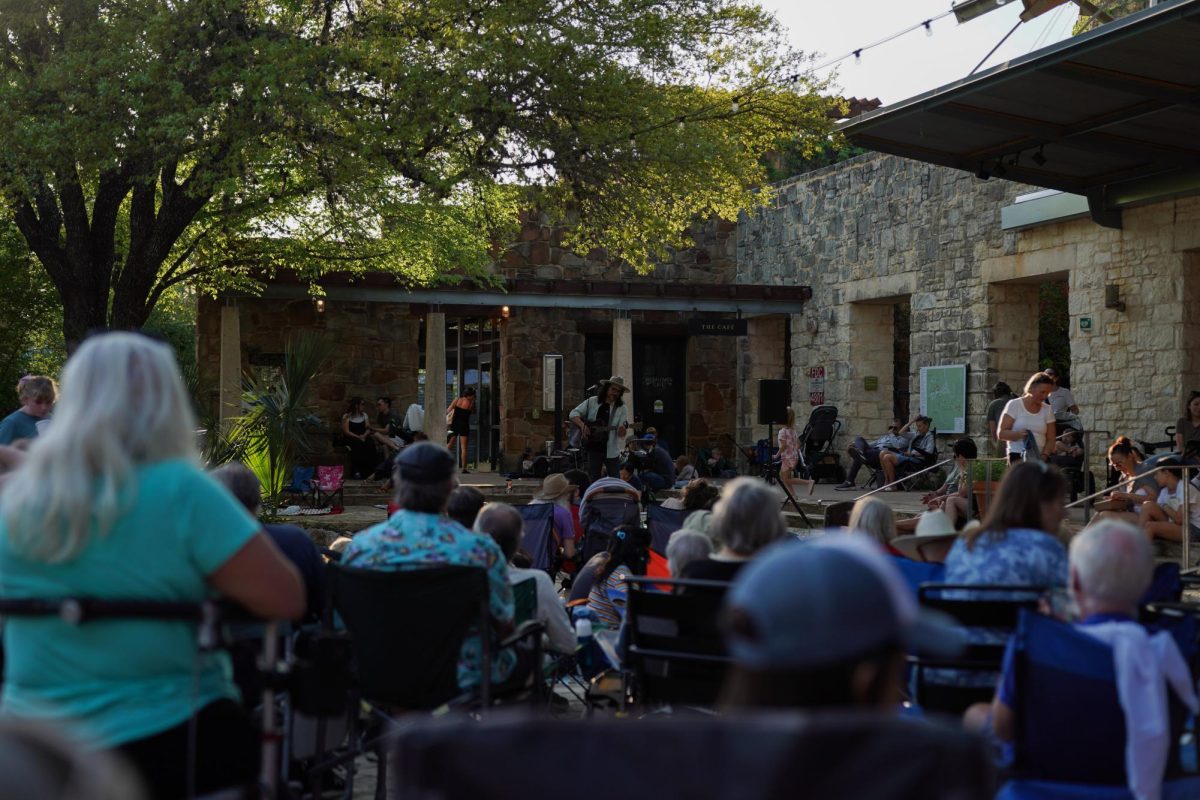While walking near Jester, you may have noticed the building that looks like the Microsoft Windows logo met a traditional Christian chapel. “Austin,” the newest architectural addition to the Blanton Museum of Art, took a winding path before landing on the 40 Acres.
“Austin” was designed over the course of American artist Ellsworth Kelly’s 70-year-long artistic career. A renowned abstract artist, Kelly is famous for his hard-edge abstract paintings and sculptures, but not for architecture. Still, Kelly mulled over the design of “Austin” for decades before it was finished.
Tricia Paik, Florence Finch Abbott Director of Mount Holyoke College Art Museum and the author of an eponymous biography of Kelly, said Kelly had been working towards creating “Austin” his entire career.
“‘Austin’ is the culmination of Kelly’s key artistic goals that he first established as a young man living in Paris,” Paik said.
Paik said Kelly was inspired by France’s religious architecture after serving in World War II. Kelly wanted his art to exist beyond itself and have a distinct relationship with the architecture in which it was displayed, an idea that would resurface between “Austin” and the artworks inside.
Carter Foster, deputy director for curatorial affairs at the Blanton and friend of the late Kelly, said this source of inspiration was pervasive in “Austin’s” design.
“(Kelly was) deeply interested in Judeo-Christian traditions of art: Romanesque architecture, Medieval art and architecture,” Foster said. “(There are) very specific references and influences in this building that go back to those traditions.”
Foster said though Kelly’s art was influenced by churches such as the Chartres Cathedral in France, he wasn’t religious. Instead, he drew a connection between art and religion because of their common spiritual value.
“I always say it’s a chapel in form but not function,” Foster said, “(Kelly) is referencing the forms of religious architecture, but turning them into his own abstractions.”
Foster said Kelly was especially inspired by the gothic Chartres Cathedral’s Rose Window applying its subtly embedded modern square pattern to “Austin’s” eastern facade, in stained glass.
Jason John Paul Haskins, architect at Bercy Chen Studio and researching author for religious architecture blog Locus Iste, thinks “Austin” is more like a chapel than a museum-goer might assume, though the Blanton has been careful not to call it a chapel.
“This actually does quite a few of the functions of a chapel,” Haskins said. “My suspicion is that it’s going to end up serving that function by default on campus, and the Museum may have mixed feelings about that.”
UT, unlike most southern schools, lacks a university chapel. Haskins said, due to its Judeo-Christian form, “Austin” may assume the function of a university chapel by default.
“The function of a chapel is more particular than that of a church. Most have a signifier. You have wedding chapel, you have votive chapels, university chapels,” Haskins said. “UT doesn’t have a university chapel.”
Haskins said that when “Austin” opens on Feb. 18, it will have an impact on campus and within the city as a whole, especially as a destination for people bogged down by the building pressures of everyday life.
“There are those cases where people suddenly feel like, regardless of where they are today, they (wasted) too much time,” Haskins said. “They need some connection to something else outside themselves.”
Correction: The story has been fixed to say "Austin" opens Feb. 18 instead of Feb. 10 as the paper originally reported.















